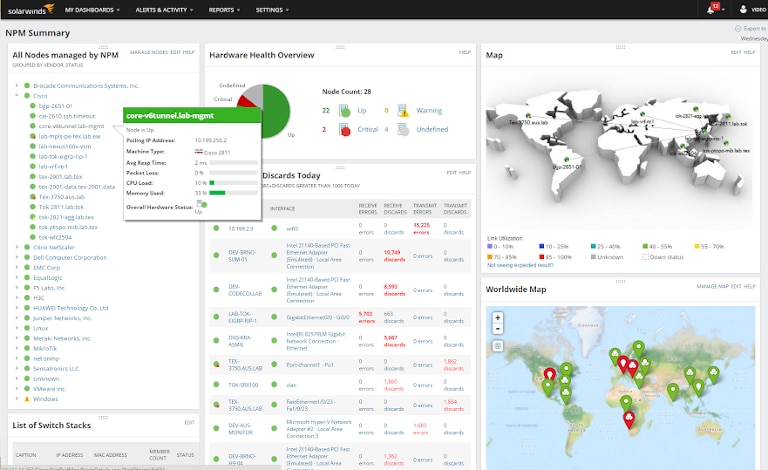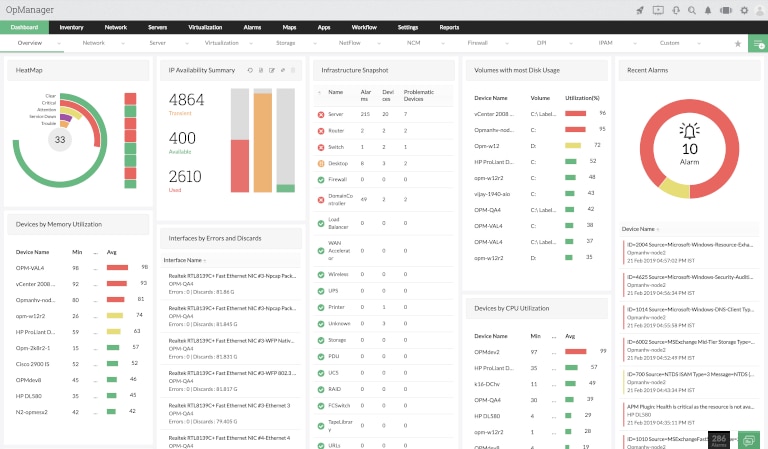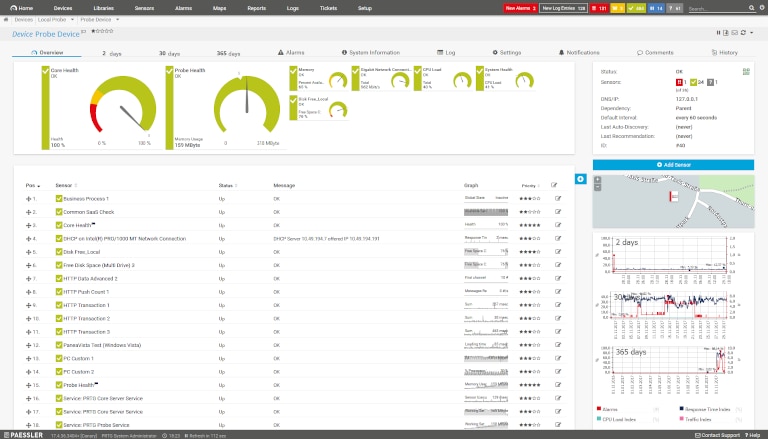With the growing complexity of networks to support modern infrastructure requirements, end-to-end mapping becomes tricky and essential at the same time. The widely used hybrid network topology comprises sophisticated elements, including wired devices, wireless connections, cloud and on-premises servers, virtual networks, and other utilities.
Many organizations poorly maintain and document their network inventory, leading to unnecessary costs and compliance risks from obsolete resources. You also lose track of dead spots, overlapping channels, and slow zones across your network resulting in weak signals or Wi-Fi lags. Mapping and maintaining networks manually on spreadsheets is possible, but the probability of human errors and inaccuracy in the discovery process is high. Besides, executing redundant operational tasks, such as updating network inventory, monitoring device availability, or discovering faulty pieces of equipment, becomes tedious and inconvenient in the long run.
Numerous tools and software solutions are available to discover all the components of network infrastructure and monitor them continuously. An efficient network management software provides you with automated network discovery and topology mapping capabilities. It also helps ensure high performance and security of networks with detailed visualization of fault, performance, and availability information on existing devices.
In this blog, we’ll discuss the structured network inventory management using a reliable network discovery tool.
What Is Network Discovery?
Network discovery in a single system or computer is a setting used to detect other computers and devices discoverable within the network. This setting (when enabled) also makes your computer discoverable to other networked devices. On the other hand, network discovery at an enterprise scale is defined as a process of scanning and finding computers, network resources (e.g., IP addresses, IP ports), SNMP-supported devices and their interfaces and newly-added components, spread across the entire network. Its benefits and importance are manifold:
- Network discovery helps in identifying what and how devices are connected across the network.
- Network topology mapping provides complete visibility into network environments. It allows you to find security loopholes or vulnerabilities, such as unnecessary open IP ports, abandoned IP addresses, vulnerable subnets, and more.
- It also helps in keeping track of every device deployed on the network for quick troubleshooting of performance issues and faults.
Network discovery tools gather system information associated with the devices to help analyze the bottlenecks in your network. To free up your IT team’s bandwidth from manual operations, you need an advanced tool to create a detailed inventory of dynamic networks, keep it up to date, and give a mapped visualization of all physical and virtual connections.
Here’s the list of best network management tools with automated discovery capabilities for your expanding network infrastructure.
Top 4 Network Discovery Tools
Outlined below is the list of best network discovery software and tools for your enterprise network mapping.
1. SolarWinds Network Performance Monitor

SolarWinds offers a comprehensive network monitoring solution—Network Performance Monitor (NPM)—incorporating the following core capabilities:
- Using SNMP monitoring, NPM automatically scans and discovers all the SNMP-enabled devices on your network.
- This tool helps create an informative inventory of your growing network, including the sophisticated equipment procured from multiple vendors.
- It also allows you to schedule network discoveries at regular intervals to keep your inventory updated with newly-added components. NPM’s integrated Network Sonar Wizard performs the discovery across the list of subnets, IP addresses, ranges, and SNMP credentials you provide.
- For large, dynamic networks, NPM gives you the flexibility to customize the network topology mapping, once a detailed inventory is outlined.
- It fetches custom data from devices by polling Management Information Bases (MIBs) and represents relevant information on custom dashboards. The smart visualizations and metrics charts make it easier to monitor and optimize your device performance, fault, and availability.
To see the value your enterprise can drive from SolarWinds® Network Performance Monitor, try a fully functional 30-day Free Trial.
2. ManageEngine OpManager

To help you with end-to-end network discovery and device arrangement, ManageEngine’s OpManager provides a slew of features (bundled in tools under one solution) to make network performance monitoring more agile. The software acts as a network mapper, automatically locating every component connected to your network, so you can generate custom topology maps with preferred seed device and layout type. It provides not only complete visibility into the network infrastructure but also runs periodic scans to keep all maps updated.
Additionally, OpManager provides highly customizable dashboards to convert captured data into actionable insights, displaying a comprehensive view of:
- Availability, performance, and health statistics of network devices, services, servers, WAN links, and more
- Critical network events and alerts, pinpointing the devices in need of attention
- Network maps based on device and vendor types
It also enables the custom grouping of devices based on business services, geographical locations, and device dependencies.
ManageEngine offers a Free Edition of OpManager that allows three network devices and two users with the basic monitoring feature.
3. Paessler PRTG Network Monitor

Paessler PRTG Network Monitor is another easy-to-use monitoring software to thoroughly scan and monitor all your devices, systems, server statuses, network traffic, and more. The software solution’s auto-discovery function scans your entire network in segments, detects connected devices using ping, and groups them based on device types. It creates sets of monitoring sensors to automatically discover all the available devices and find new devices connected to the network.
PRTG also provides the following mapping capabilities:
- Integration of all the discovered elements, such as routers, firewalls, switches, virtual servers, applications, etc., into a network map
- Custom HTML designing of multi-layered maps with PRTG’s simple drag-and-drop map editor
- The software also supports external tools for automated mapping of network topology
The subscription license size of the PRTG Network Monitor varies from 500 sensors to unlimited sensors depending on the plan you choose. Find out more about the pricing here.
4. Nagios XI

Like SolarWinds Network Performance Monitor, Nagios XI network monitoring tool features the auto-discovery of hosts and devices located across a large network. The software uses its own network monitoring protocol to scan and discover network resources in the environment.
Insightful, custom dashboards and detailed reports give all the information you need to keep track of network inventory.
To deep-dive into the features and capabilities of Nagios XI, visit their webpage.
